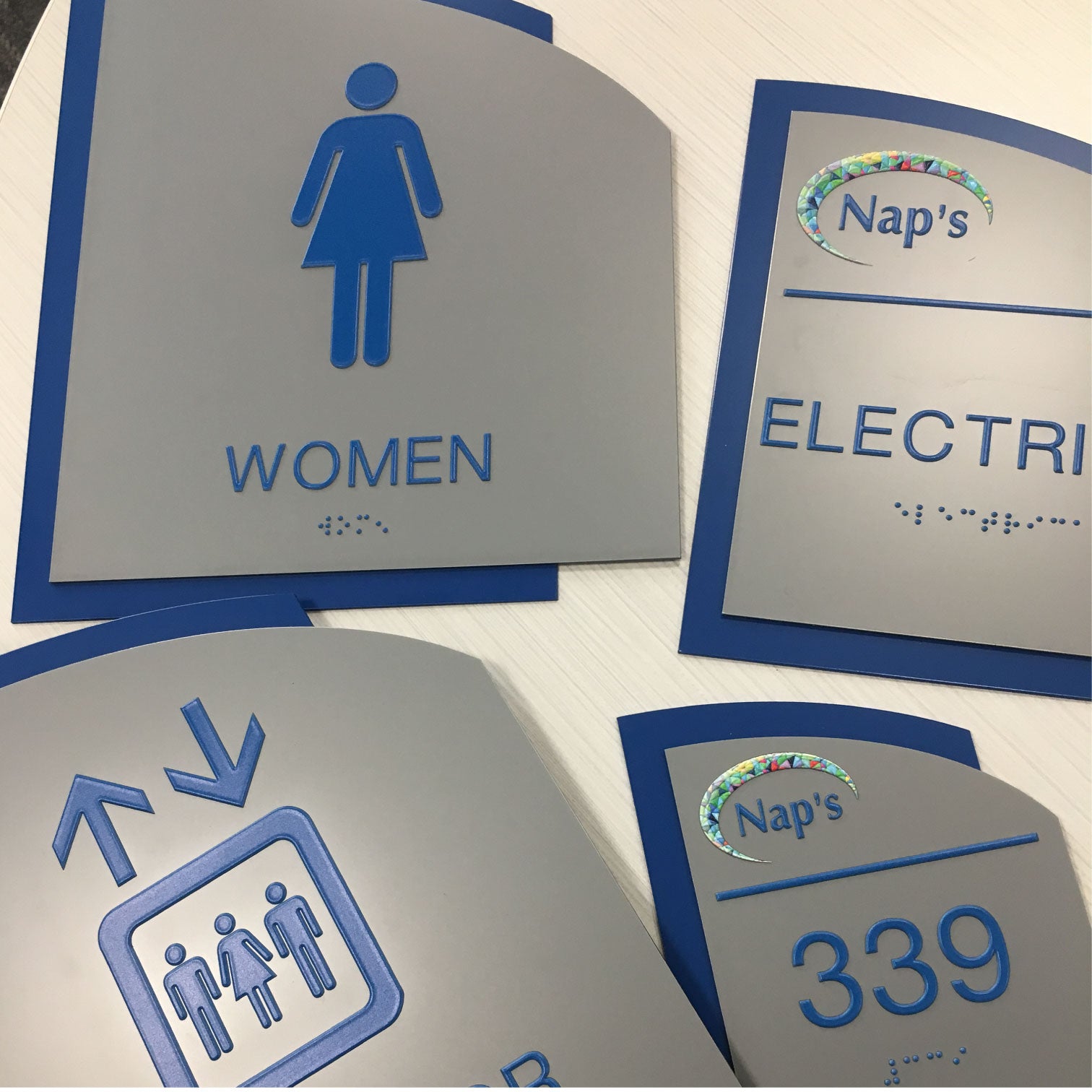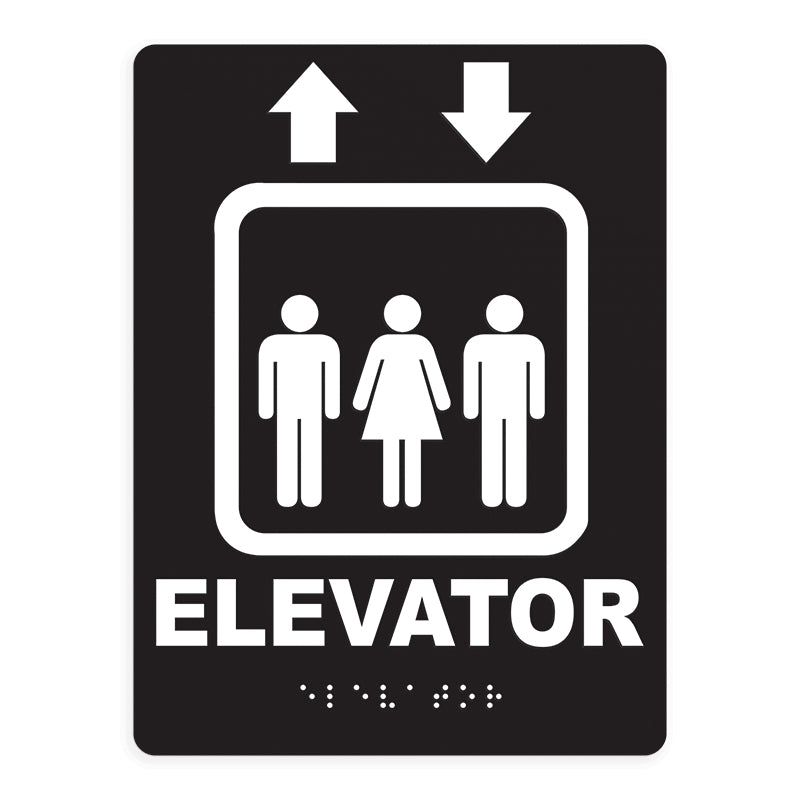Recognizing the Rules Behind ADA Signs
Recognizing the Rules Behind ADA Signs
Blog Article
Exploring the Trick Features of ADA Indicators for Improved Accessibility
In the world of availability, ADA indicators serve as quiet yet effective allies, guaranteeing that rooms are comprehensive and accessible for individuals with impairments. By integrating Braille and tactile elements, these signs break obstacles for the aesthetically damaged, while high-contrast color systems and clear typefaces provide to diverse aesthetic requirements.
Relevance of ADA Compliance
Guaranteeing compliance with the Americans with Disabilities Act (ADA) is essential for promoting inclusivity and equivalent gain access to in public rooms and work environments. The ADA, established in 1990, mandates that all public facilities, companies, and transport services suit people with handicaps, ensuring they appreciate the same civil liberties and opportunities as others. Compliance with ADA criteria not just meets lawful commitments however likewise boosts a company's online reputation by showing its dedication to diversity and inclusivity.
Among the crucial facets of ADA conformity is the application of accessible signs. ADA indicators are created to guarantee that people with specials needs can conveniently navigate via rooms and structures. These indicators should comply with specific guidelines regarding dimension, font style, color contrast, and positioning to ensure presence and readability for all. Effectively executed ADA signage helps get rid of barriers that individuals with specials needs usually come across, thus promoting their freedom and self-confidence (ADA Signs).
In addition, sticking to ADA guidelines can minimize the danger of prospective penalties and legal effects. Organizations that fail to follow ADA standards might encounter claims or fines, which can be both destructive and economically challenging to their public image. Therefore, ADA compliance is important to cultivating an equitable atmosphere for every person.
Braille and Tactile Components
The unification of Braille and responsive elements right into ADA signs personifies the concepts of availability and inclusivity. It is usually put beneath the matching message on signage to guarantee that people can access the info without aesthetic assistance.
Responsive aspects prolong past Braille and include raised characters and icons. These parts are created to be noticeable by touch, allowing people to identify space numbers, washrooms, exits, and other critical areas. The ADA sets specific standards regarding the dimension, spacing, and positioning of these tactile components to optimize readability and make sure uniformity throughout various environments.

High-Contrast Color Pattern
High-contrast color design play a pivotal duty in boosting the presence and readability of ADA signage for people with visual disabilities. These schemes are essential as they optimize the difference in light reflectance in between text and history, making certain that indications are quickly discernible, also from a distance. The Americans with Disabilities Act (ADA) mandates making use of certain color contrasts to suit those with minimal vision, making it a vital element of compliance.
The effectiveness of high-contrast colors lies in their capability to stand out in numerous lighting conditions, consisting of poorly lit atmospheres and locations with glare. Usually, dark text on a light history or light text on a dark history is utilized to attain optimal contrast. As an example, black message on a yellow or white history offers a stark visual difference that helps in quick recognition and understanding.

Legible Fonts and Text Size
When thinking about the layout of ADA signage, the choice of readable fonts and suitable text size can not be overemphasized. Related Site These aspects are critical for ensuring that signs come to people with aesthetic disabilities. The Americans with Disabilities Act (ADA) mandates that typefaces have to be not italic and sans-serif, oblique, script, very attractive, or of unusual kind. These demands aid ensure that the message is easily legible from a distance which the personalities are distinct to diverse target markets.
The size of the text likewise plays a pivotal duty in ease of access. According to ADA standards, the minimum message height should be 5/8 inch, and it needs to enhance proportionally with watching range. This is specifically crucial in public rooms where signage demands to be reviewed quickly and properly. Consistency in message dimension adds to a natural visual experience, assisting people in navigating atmospheres effectively.
In addition, spacing in between letters and lines is integral to clarity. Sufficient spacing stops personalities from appearing crowded, boosting readability. By sticking to these requirements, designers can considerably click to read more improve ease of access, guaranteeing that signs offers its intended objective for all people, regardless of their aesthetic capacities.
Effective Positioning Approaches
Strategic positioning of ADA signage is vital for making best use of availability and making sure conformity with lawful standards. Properly located indications assist individuals with handicaps properly, promoting navigation in public areas. Secret considerations include distance, height, and presence. ADA guidelines state that indications check my reference need to be mounted at an elevation in between 48 to 60 inches from the ground to ensure they are within the line of sight for both standing and seated people. This typical elevation range is crucial for inclusivity, enabling mobility device users and individuals of varying heights to accessibility information easily.
Additionally, indicators should be positioned nearby to the latch side of doors to allow simple identification prior to access. Consistency in indicator positioning throughout a center enhances predictability, decreasing confusion and boosting total user experience.

Verdict
ADA indicators play an essential function in promoting access by incorporating features that address the demands of people with impairments. Incorporating Braille and tactile elements ensures crucial information comes to the visually damaged, while high-contrast color pattern and clear sans-serif font styles improve presence across various illumination problems. Effective positioning approaches, such as appropriate placing heights and tactical locations, even more help with navigation. These components jointly foster a comprehensive atmosphere, emphasizing the significance of ADA compliance in making certain equivalent gain access to for all.
In the world of accessibility, ADA signs offer as quiet yet powerful allies, guaranteeing that rooms are inclusive and accessible for people with specials needs. The ADA, established in 1990, mandates that all public facilities, employers, and transport solutions accommodate individuals with impairments, ensuring they enjoy the same civil liberties and chances as others. ADA Signs. ADA indications are created to make sure that people with specials needs can conveniently browse through buildings and rooms. ADA guidelines stipulate that indicators ought to be installed at a height between 48 to 60 inches from the ground to ensure they are within the line of sight for both standing and seated individuals.ADA indications play a crucial function in advertising accessibility by incorporating functions that attend to the needs of people with specials needs
Report this page